Fixed focal length or zoom lenses?
Introduction
For some years now, I have been taking pictures exclusively with fixed focal lengths. Now we are
planning a longer hike this summer and the weight of the lenses plays an important role. Couldn't I
use a zoom lens again? Is the image quality of fixed focal lengths really so outstanding? Of course,
that was the main reason when I switched to fixed focal lengths. But it was also a decision for more
conscious photography: you choose the focal length with which you want to create a picture and don't
just turn the zoom ring until the crop is right.
But anyhow; now I wanted to know again how big the difference in quality really is. I also had a
40mm pancake lens in my drawer for a while. Super light and small and with aperture 2.8 still faster
than my zoom lenses. And since I've been using a 45mm normal lens for a while now, 40mm almost seems
like a normal focal length. And couldn't I just leave the 35mm at home and replace the 45mm and the
35mm with a 40mm?
I can say it in advance: The tests showed that the fixed focal lengths are unbeatable and the 40mm
did so well that it easily beats the zoom lenses.
You can play around with the test shots below. Simply move the mouse over the desired aperture and
then compare it with another lens. For each lens there is a section from the centre of the image and
from the edge of the image. The image remains at the last aperture selection, so you can compare
different lenses at different apertures. Have fun!
All shots were exposed with a Canon 5D Mark 4 (full frame). Have fun!
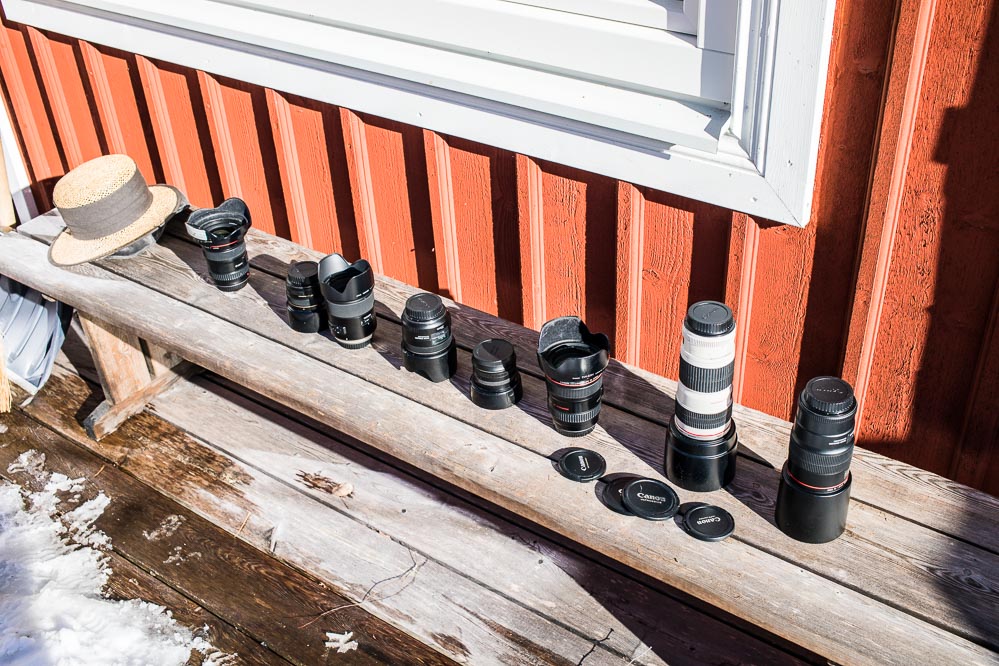
Comparison of focal lengths: 35mm - 40mm - 45mm - 50mm
I already hinted at it in the introduction: can you replace a 35mm wide angle and a 45/50mm normal
focal length with a 40mm pancake? How big is the difference really? In the following pictures you
can judge the coverage of the individual focal lengths for yourself. If the difference between 50mm
and 45mm is not yet that big, 5mm steps are all the more significant as the focal lengths get
smaller.
But what exactly is a "normal lens"? An old definition is that a normal focal length corresponds to
the diagonal of the image format. For a "full frame" camera (24mm x 36mm image format) this is
43.3mm. So whether you call a 40mm, a 45mm or a 50mm a normal focal length is more a matter of
opinion.




Finally, and before we come to the evaluations of the test, one more remark. The image sections shown
are very small in relation to the total image size and are displayed 1:1. This is the famous pixel
peeping. A Canon 5D Mark 4 has a resolution of 6720 x 4480 pixels. If you print this with 240dpi
(100 pixel per cm) you get a print of 67 x 45cm, which is about the size of A2. If you print
smaller, you do not need this resolution. Even for the display on a 4k screen, you only need about a
quarter of these pixels. A lens that appears relatively blurred in the tests below can still look
very good on a 4k screen or an A3 print. The smaller the screen/print, the less good the resolution
has to be.

But now let's look at the results!
Normal Lenses
Canon EF40mm f-2.8 STM
The pancake lens is practically identical in the centre of the image at all apertures (this is how a lens should behave!). At the edge of the image, the vignetting disappears from f/4, the sharpness is very good at all apertures.
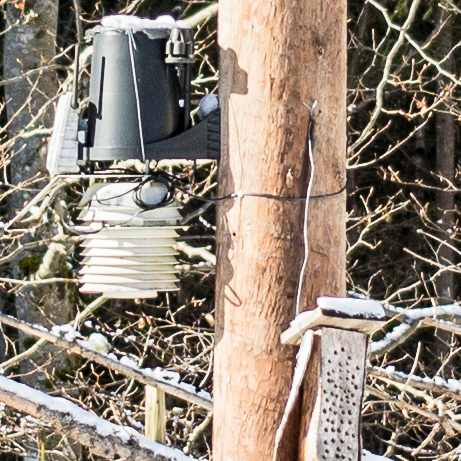
Zentrum: 2,8 |
4,0 |
5,6 |
8,0 ||
Rand: 2,8 |
4,0 |
5,6 |
8,0
Move the mouse over the aperture number to display the corresponding
image.
Canon EF17-40mm f-4L USM @ 40mm
The wide-angle zoom shows very soft contours in the centre of the image at open aperture, from aperture 5.6 the sharpness is good. At the edge of the image, the vignetting disappears from f/5.6, the sharpness is still poor even at f/8.
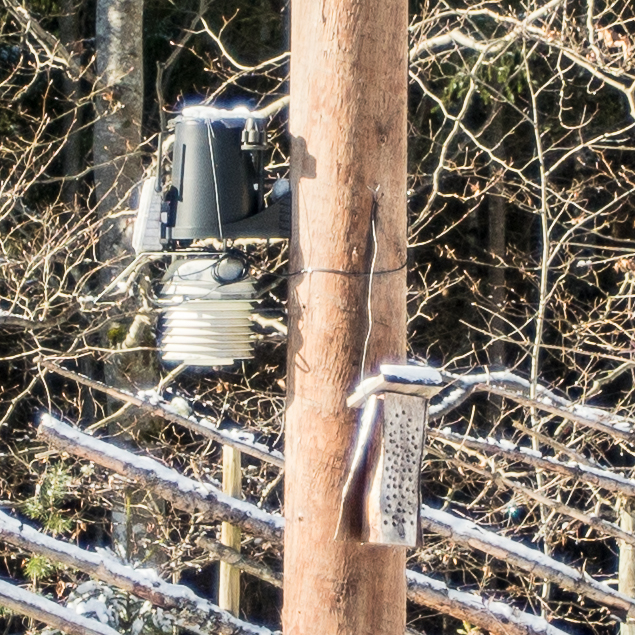
Zentrum: 4,0 |
5,6 |
8,0 ||
Rand: 4,0 |
5,6 |
8,0
Move the mouse over the aperture number to display the corresponding
image.
TAMRON SP 45mm F-1.8 Di VC USD F013
At open aperture, the 45mm Tamron shows significant chromatic aberration in the centre of the image (which can be corrected in post-processing), which disappears from f/4, and the sharpness is excellent at full aperture. At the edge, sharpness is good from full aperture, very good from f/5.6.
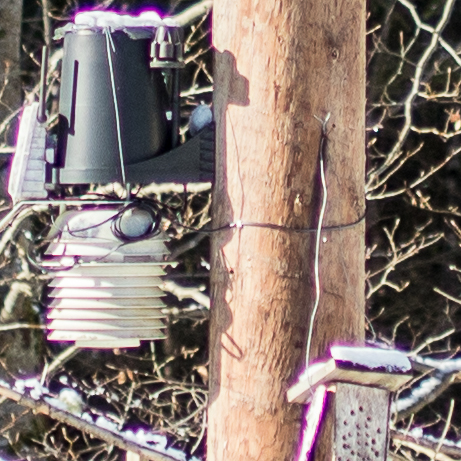
Zentrum: 1,8 |
2,0 |
2,8 |
4,0 |
5,6 |
8,0 ||
Rand: 1,8 |
2,0 |
2,8 |
4,0 |
5,6 |
8,0
Move the mouse over the aperture number to display the corresponding
image.
Canon EF50mm f-1.4 USM
This Canon 50mm was my standard lens for a long time. At open aperture it is very soft in the centre of the image, but OK from f/2.8. However, the image sharpness increases further up to f/5.6. The vignetting decreases considerably at the edge of the image from f/2.0, but it only becomes really sharp from f/5.6 or even f/8.0. The Tamron is by far better (but also a lot heavier, but it also has image stabilisation).
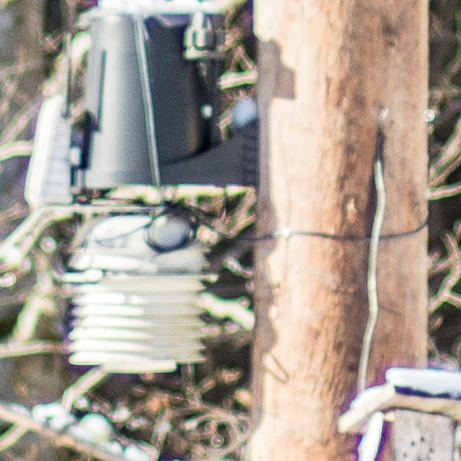
Zentrum: 1,4 |
2,0 |
2,8 |
4,0 |
5,6 |
8,0 ||
Rand: 1,4 |
2,0 |
2,8 |
4,0 |
5,6 |
8,0
Move the mouse over the aperture number to display the corresponding
image.
Canon EF24-105mm f-4L IS USM @ 50mm
The 24-105mm has long been offered as a standard zoom package with the 5D cameras. It is quite sharp in the centre of the image at open aperture, but sharpness increases again at 5.6. Both the EF 40mm and the Tamron are sharper at open aperture than this zoom at 5.6. At the edge, the vignetting decreases from 5.6, but it is never really sharp.
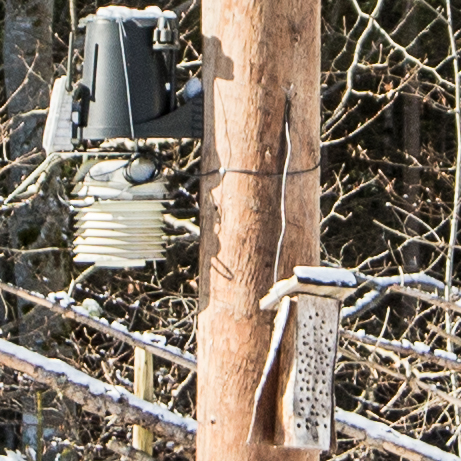
Zentrum: 4,0 |
5,6 |
8,0 ||
Rand: 4,0 |
5,6 |
8,0
Move the mouse over the aperture number to display the corresponding
image.
Wideangle Lenses
Canon EF35mm f-2
I also used this wide-angle lens from Canon for quiet a while. It is super light and handy. At open aperture in the centre of the image it shows clear chromatic aberration (which of course can be corrected in Lightroom). The aberration disappears from aperture 5.6 onwards. At the edges, it is only fairly sharp at aperture 8. The vignetting disappears from aperture 2.8.
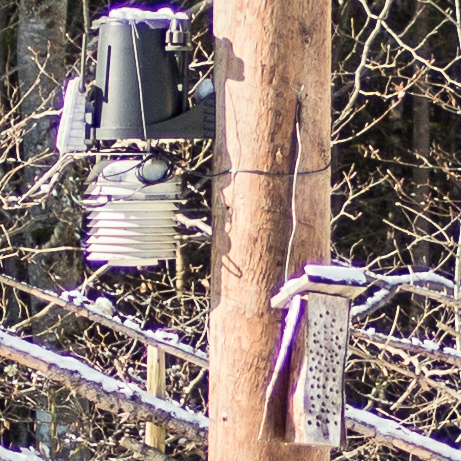
Zentrum: 2,0 |
2,8 |
4,0 |
5,6 |
8,0 ||
Rand: 2,0 |
2,8 |
4,0 |
5,6 |
8,0
Move the mouse over the aperture number to display the corresponding
image.
Canon F35mm f-2 IS USM
This wide-angle lens from Canon with integrated image stabilisation shows very good sharpness in the centre of the image already at open aperture, which changes only marginally over different aperture settings. At the edge of the image, the vignetting disappears for the most part from aperture 2.8, the sharpness is already OK from open aperture, and very good from 5.6.
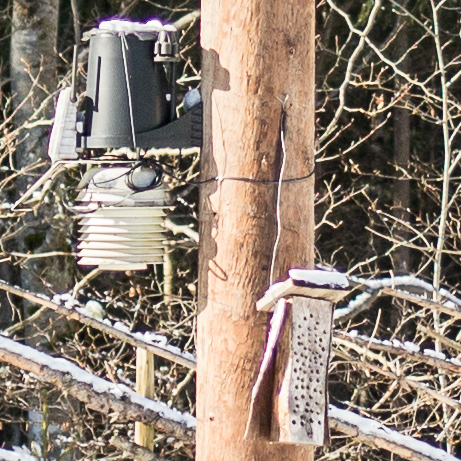
Zentrum: 2,0 |
2,8 |
4,0 |
5,6 |
8,0 ||
Rand: 2,0 |
2,8 |
4,0 |
5,6 |
8,0
Move the mouse over the aperture number to display the corresponding
image.
Canon EF17-40mm f-4L USM @ 35mm
The 17-40mm wide-angle zoom does not behave much differently at 35mm than at 40mm (see above for the normal lenses). What is most noticeable is the blurriness at the edges, which does not really improve with increasing aperture. In the centre of the image the lens is quite good from aperture 5.6.

Zentrum: 4,0 |
5,6 |
8,0 ||
Rand: 4,0 |
5,6 |
8,0
Move the mouse over the aperture number to display the corresponding
image.
Canon EF24-105mm f-4L IS USM @ 35mm
The 24-105mm zoom lens also shows a similar behaviour at 35mm as at 50mm (see above for normal lenses). Quite good in the centre of the image, never good at the edge.

Zentrum: 4,0
|
5,6 |
8,0 ||
Rand: 4,0 |
5,6 |
8,0
Move the mouse over the aperture number to display the corresponding
image.
Telephoto Lenses
Canon EF100mm f-2.8L Macro IS USM
The 100mm macro has been part of my standard equipment (35mm, 45 or 50mm and 100mm) for a long time . It really is a great lens and the macro function makes it very flexible to use. However, it is neither small nor light, but it has integrated image stabilisation. In the centre of the image it is already very good from full aperture, the sharpness is about the same at all apertures. The same applies to the peripheral area (with slightly less sharpness), the vignetting has disappeared from f/4.
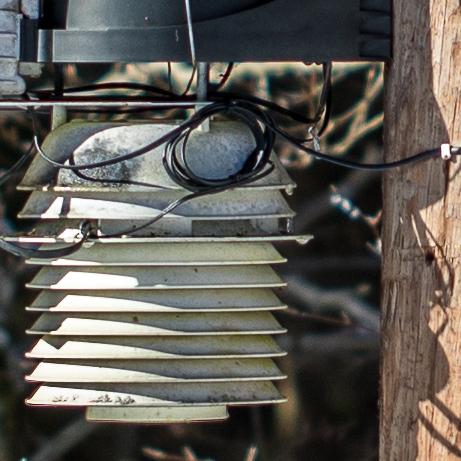
Zentrum: 2,8 |
4,0 |
5,6 |
8,0 ||
Rand: 2,8 |
4,0 |
5,6 |
8,0
Move the mouse over the aperture number to display the corresponding
image.
Canon EF24-105mm f-4L IS USM @ 100mm
The 24-105mm normal zoom is disappointing in the centre of the image with a very soft image that only becomes sharp at f/8. At the edge of the image, even at f/8, the lens is not as sharp as the 100mm at the top at open aperture. Since zoom lenses are often used at their respective extreme focal lengths, this is a little disappointing for this standard zoom.
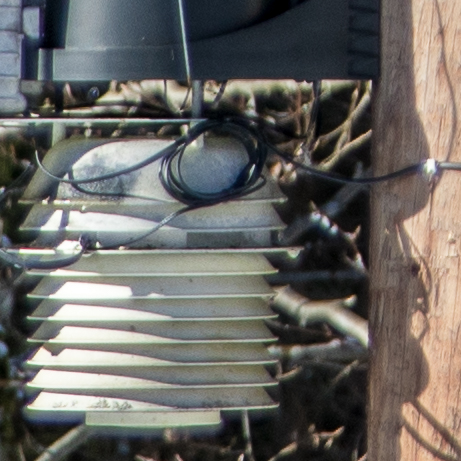
Zentrum:
4,0 |
5,6 |
8,0 ||
Rand: 4,0
|
5,6 |
8,0
Move the mouse over the aperture number to display the corresponding
image.
Canon EF70-200mm f-4L USM @ 100mm
The 70-200mm telephoto zoom is a relatively light telephoto zoom from Canon. It is now also available in an improved version with integrated image stabilisation. This specimen shows quite good sharpness in the centre of the image at all apertures, at the edge of the image it is only reasonably sharp at f/8. The vignetting disappears from f/5.6.
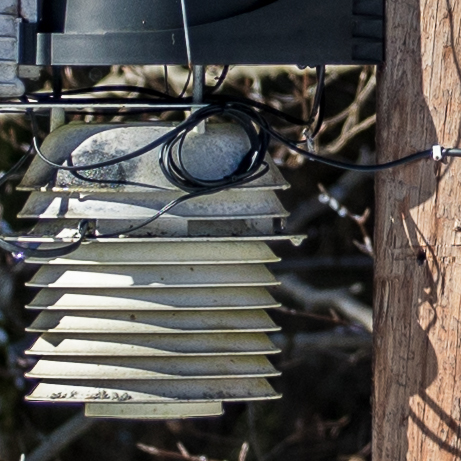
Zentrum:
4,0 |
5,6 |
8,0 ||
Rand: 4,0
|
5,6 |
8,0
Move the mouse over the aperture number to display the corresponding
image.